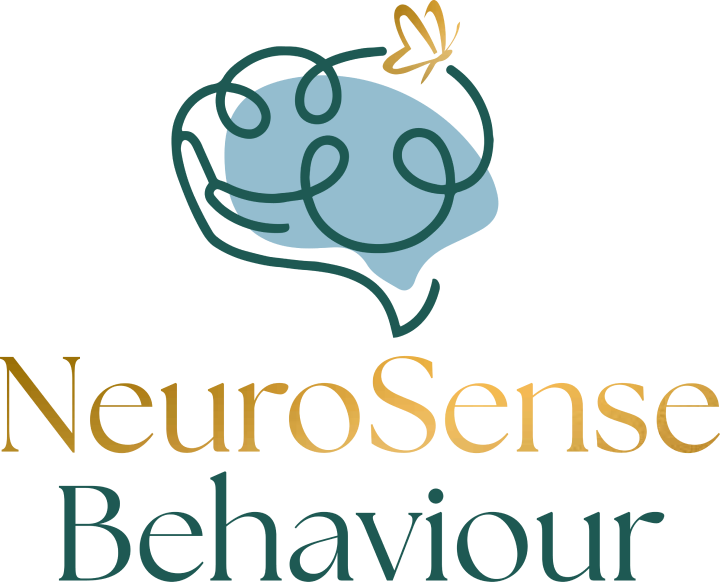Speech therapy is a vital intervention that helps individuals improve their communication skills, addressing speech, language, and voice disorders. It’s particularly crucial for children and adults who face difficulties in articulation, fluency, comprehension, and social communication.
In this blog, we’ll explore various speech therapy methods, their benefits, and how they can help individuals overcome communication challenges. If you’re searching for a speech therapist in Islamabad, we’ve also included information to guide you in finding the right professional near you.
What is Speech Therapy?
Speech therapy is a structured program designed to improve communication abilities by addressing speech and language disorders. It involves working with a speech-language pathologist (SLP) or a speech therapist to enhance a person’s ability to speak clearly, understand language, and express themselves.
Speech therapy isn’t just about pronunciation; it covers a wide range of communication areas, including:
- Articulation Disorders: Difficulty pronouncing words clearly.
- Fluency Disorders: Issues like stuttering or prolonged sounds.
- Voice Disorders: Problems with pitch, volume, or quality of voice.
- Language Disorders: Difficulty understanding and using language appropriately.
Let’s dive into the key speech therapy methods used to address these challenges.
Table of Contents
1. Articulation Therapy
One of the most common speech therapy methods is articulation therapy, which focuses on correcting the pronunciation of sounds and syllables. This method is essential for individuals who have difficulty pronouncing certain sounds correctly.
How it Works:
- The therapist identifies mispronounced sounds.
- The child or adult practices these sounds through guided exercises.
- Visual aids and repetition techniques are often used.
Example:
If a child struggles to pronounce the letter “R,” the therapist will guide them in practicing the correct tongue and lip placement to produce the sound accurately.
Speech Therapy Methods: A Complete Guide to Effective Techniques
Speech therapy is a vital intervention that helps individuals improve their communication skills, addressing speech, language, and voice disorders. It’s particularly crucial for children and
2. Language Intervention Therapy
Language intervention therapy focuses on improving a person’s ability to understand and use language effectively. This method is beneficial for children with language delays or developmental disorders such as autism.
How it Works:
- The therapist engages the individual in activities such as storytelling, picture interpretation, and role-playing.
- They use interactive tools like flashcards, books, and games to build vocabulary and improve sentence formation.
- The therapy also involves teaching social communication skills.
Tip:
If your child struggles with both comprehension and expression, language intervention therapy can make a significant difference in their ability to communicate with others.
3. Fluency Therapy
Fluency disorders, such as stuttering, affect the flow of speech. Fluency therapy helps individuals manage speech interruptions and develop a more natural speech pattern.
How it Works:
- The therapist teaches breathing techniques and speech pacing strategies.
- The therapy includes exercises to reduce anxiety and build confidence in speaking situations.
- It often involves practicing speaking in different social scenarios.
💡 Fun Fact:
Some therapists use singing as a technique to help individuals with stuttering, as singing often bypasses speech blocks.
4. Voice Therapy
Voice therapy is used for individuals with voice disorders, such as hoarseness, pitch problems, or a strained voice. This method helps improve the quality, pitch, and strength of the voice.
How it Works:
- The therapist evaluates the individual’s vocal habits and identifies unhealthy voice patterns.
- They teach exercises to improve vocal cord function.
- Techniques include proper breathing, posture, and vocal warm-ups.
Did You Know?
Voice therapy can be helpful for teachers, singers, and public speakers who frequently use their voices.
5. Augmentative and Alternative Communication (AAC)
For individuals who struggle with verbal communication, AAC methods provide alternative ways to communicate.
Types of AAC:
- Low-tech AAC: Picture boards, communication books, and sign language.
- High-tech AAC: Speech-generating devices and apps.
Who Can Benefit?
AAC is beneficial for individuals with severe speech impairments, including those with cerebral palsy, ALS, or traumatic brain injuries.
6. Oral-Motor Therapy
Oral-motor therapy focuses on strengthening the muscles used in speech production. It’s often used for individuals with apraxia of speech or dysarthria, where the brain struggles to coordinate muscle movements.
How it Works:
- The therapist uses exercises to improve the strength and coordination of the lips, tongue, and jaw.
- Techniques include blowing exercises, chewing, and tongue stretches.
Tip:
Consistent practice of oral-motor exercises at home can significantly improve speech clarity.
7. Cognitive-Communication Therapy
This method addresses the cognitive aspects of communication, such as memory, attention, and problem-solving.
Who Can Benefit?
- Individuals recovering from a stroke or brain injury.
- Children with learning disabilities or ADHD.
How it Works:
- Therapists use puzzles, memory games, and storytelling to improve cognitive skills.
- They focus on enhancing social communication and comprehension.
Why Choose Speech Therapy for Your Child or Loved One?
Speech therapy can be life-changing for individuals facing communication challenges. Here are some key benefits:
| Benefits of Speech Therapy | Impact on Communication |
|---|---|
| Improved Articulation | Clearer speech and better pronunciation |
| Enhanced Language Skills | Better understanding and use of language |
| Increased Confidence | Reduced anxiety in social interactions |
| Improved Social Skills | Stronger relationships and connections |
| Better Academic Performance | Enhanced comprehension and learning abilities |
Looking for a Speech Therapist in Islamabad?
If you’re based in Islamabad or Rawalpindi and seeking professional help for speech therapy, we recommend visiting a trusted speech therapist in Islamabad. A qualified therapist can tailor interventions to suit your child’s specific needs, ensuring steady progress.
At NeuroSenseBehaviour, we offer personalized speech therapy services to help children and adults overcome speech and language disorders. Our experienced therapists use evidence-based techniques to ensure effective results.
How to Choose the Right Speech Therapy Method?
Choosing the right method depends on the individual’s needs, age, and the type of speech disorder. Here’s a quick guide to help you:
| Speech Disorder | Recommended Therapy Method |
|---|---|
| Articulation Disorder | Articulation Therapy |
| Language Delay | Language Intervention Therapy |
| Stuttering | Fluency Therapy |
| Voice Disorder | Voice Therapy |
| Non-Verbal Communication | AAC Methods |
| Apraxia or Dysarthria | Oral-Motor Therapy |
Final Thoughts: Speech Therapy Methods That Work
Speech therapy methods are diverse and tailored to address various communication challenges. Whether it’s improving articulation, managing stuttering, or enhancing cognitive communication, each method plays a crucial role in helping individuals achieve better communication.
If you’re looking for a speech therapist in Islamabad, consider exploring personalized therapy options that meet your unique needs. Early intervention can make a significant difference in the long-term progress of speech and language development.
NeuroSenseBehaviour Clinical Child Psychologist in Rawalpindi & Islamabad Best clinical psychologist in Islamabad & Rawalpindi, providing compassionate care for children’s developmental needs. Specialised in ABA therapy
About NeuroSense Behaviour
As a parent, understanding your child’s sensory experiences can be key to helping them thrive. Sensory issues, such as being overly sensitive to lights, sounds, or textures, can impact a child’s behavior, focus, and emotional well-being. Recognizing these signs early is crucial for providing the right support.
At NeuroSenseBehaviour, we specialize in identifying and addressing sensory issues through personalized therapies tailored to each child’s needs. Our expert team is here to guide you and provide the tools necessary for your child’s development and comfort. If you suspect your child may be struggling with sensory sensitivities, don’t wait—contact us today to Free schedule a consultation. Together, we can unlock your child’s full potential and help them navigate the world more confidently.
Reach out to NeuroSenseBehaviour now for the support your child deserves!

Mawissh Shamim Clinical Psychologist
Mawissh Shamim is a dedicated UK licensed clinical psychologist committed to supporting neurodivergent individuals. She holds a Master’s degree in Clinical Psychology from the University of Karachi, where she developed a strong foundation in psychological theories and practices. To further enhance her expertise, Mawissh pursued advanced certifications, including becoming an International Behavioural Analyst (IBA) accredited by the International Behavioural Organisation.
